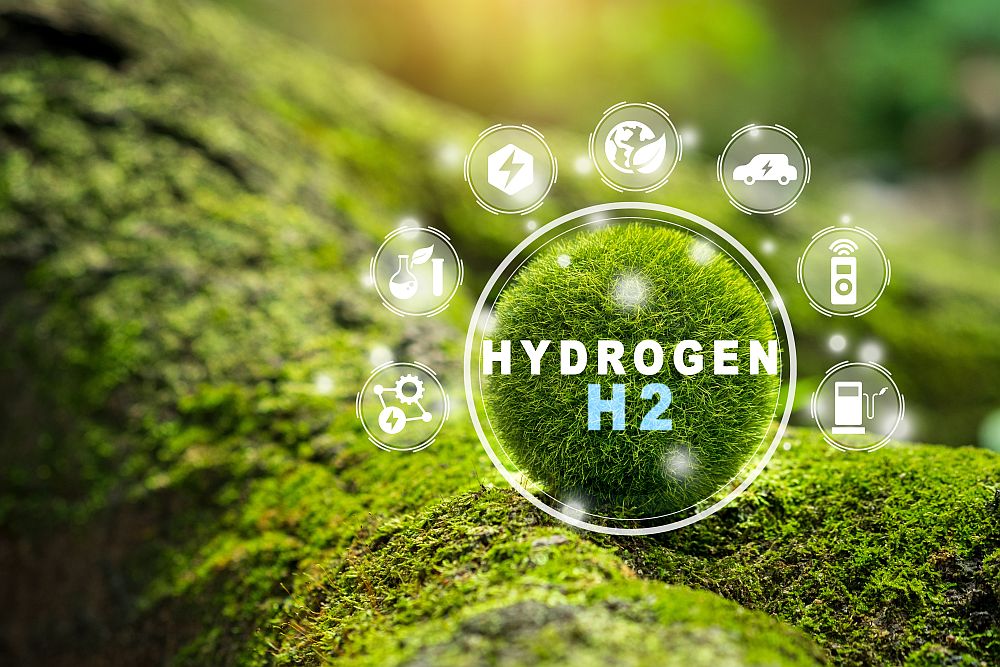
[Image above] Credit: Aqua Mechanical, Flickr (CC BY 2.0)
The development of novel imaging and characterization technologies in the 20th century kicked the field of engineered materials into high gear. Now, numerous market research reports, such as those linked here and here, estimate the advanced materials market will be worth upward of US$100 billion by 2030.
Within the advanced materials market, ceramic–polymer composites are versatile functional materials with properties that can be engineered by adjusting the composition, volume fractions, and microstructure of its filler and matrix components. These composites are commonly used for their mechanical benefits.
For example, the aerospace industry frequently replaces metals with carbon-fiber-reinforced polymers in a plane’s body, which reduces the aircraft’s weight and thus improves fuel efficiency. Carbon-reinforced composites are also used in other applications where the combination of strength and light weight is a benefit, such as in racing boats and competitive bicycling.
Recently, ceramic–polymer composites designed for electrical rather than just structural applications are gaining interest. The synergistic combinations of dielectric and piezoelectric ceramic fillers and flexible polymer matrices allow these composites to serve as capacitors, transducers, and actuators, among other electrical components.
This blog post looks at the energy storage, harvesting, and conversion applications of ceramic–polymer composites.
Advantages of ceramic–polymer composites in energy storage
As I explained in a previous blog post, clean energy technologies, particularly solar and wind, can overproduce or underproduce electricity in unpredictable ways. As such, reliable storage technologies are the key to leveling loads and providing backup power.
Ceramic–polymer composites offer several advantages in this arena. Ceramic materials typically are sensitive to their processing conditions. However, embedding these materials in a polymer matrix makes the composite easier to process by well-established techniques, such as injection molding, 3D printing, electrospinning, and solution casting. These techniques are compatible with existing electronics manufacturing workflows, which facilitates the integration of these materials into energy-storage devices.
Ceramic–polymer composites also demonstrate desirable mechanical, thermal, and electrical behaviors.
Mechanical properties
Ceramic–polymer composites possess both the flexibility of polymer–polymer composites and the tensile strength of ceramic–ceramic composites, while avoiding the brittleness of the latter. This combination of mechanical properties contributes to their usefulness in energy storage and harvesting applications, particularly at small scales.
Commonly used polymers for ceramic–polymer composites include the ferroelectric polymer polyvinylidene fluoride or the insulating polymer polyurethane.
Thermal properties
Polymer–polymer composites, although inherently flexible, typically have low thermal conductivity (witness polyurethane!). This property makes their use in electronic applications problematic because accumulated heat quickly degrades the polymer and device performance.
Ceramic fillers can improve the thermal conductivity of polymer composites when they are incorporated as nanoparticles or nanosheets. This improvement can be further enhanced through filler alignment and hybrid fillers, thus enabling their use in wearable electronic devices that require flexibility.
Electrical properties
Polymer–polymer composites do not hold a charge well, but they have high breakdown strength, i.e., the ability to withstand an electric field without breaking down or becoming conductive. Conversely, dielectric ceramics can hold an electrical charge well, but they tend to have low breakdown strengths.
Ceramic–polymer composites synergize the advantages of both components. The composite’s ability to hold a charge and resist breakdown under high voltages can be tuned by adjusting the volume fraction, size, and distribution of ferroelectric ceramic fillers within the polymer matrix.
However, there is another set of electrical properties that must be considered: energy density (how much charge a material can hold per unit of mass) and power density (how quickly a material can discharge its stored energy).
There are currently no sufficiently developed material systems that demonstrate high levels of both energy and power density for commercial applications. To address this limitation, energy harvesting systems are being developed to work with small-scale energy storage solutions for self-powered devices, such as electric vehicles, wearable devices, and implantable medical devices.
Energy harvesting with ferroelectric ceramic–polymer composites
Energy harvesting converts ambient energy in the environment into electrical energy for powering self-contained circuits. Familiar applications include solar panels and wind generators. Wearable medical devices are an application of energy harvesting that take advantage of human body motion or heat to power themselves. Current research on flexible thermoelectric generators may eventually lead to pacemakers and other implantable medical devices that are powered by body heat alone.
Piezoelectric ceramic–polymer composites are being considered for energy harvesting applications. In addition to the mechanical, thermal, and electrical properties described in the previous section, these composites can generate an electric charge in response to applied mechanical stress.
Ferroelectric ceramics, a subset of piezoelectric ceramics, are particularly interesting for energy harvesting applications. These ceramics, such as lead zirconate titanate and barium titanate, demonstrate very pronounced piezoelectric properties due to having a spontaneous electric polarization. These properties can be finely tuned by engineering the domain walls within the ferroelectric ceramic.
Antiferroelectric ceramic–polymer composites: Opening doors to large-scale energy storage
Even though no currently available energy storage system demonstrates high levels of both energy and power density, a promising avenue to achieving this feat are antiferroelectric ceramic–polymer composites.
Compared to ferroelectric ceramics, which exhibit a macroscopic spontaneous electric polarization, there is no macroscopic polarization in antiferroelectric ceramics because their magnetic dipoles within each domain point in opposite directions.
Some ceramics can be induced to switch between the antiferroelectric and ferroelectric phases in an electric field. This switching opens the door to achieving both high energy and power densities in the material, which could pave the way to developing large-scale, efficient energy storage devices.
Lead zirconate titanate, which is frequently investigated as an antiferroelectric ceramic, has a significant drawback in that lead is toxic to humans. Research is ongoing to find lead-free antiferroelectric ceramic materials for use in ceramic–polymer composites.
Polymer nanocomposite dielectrics are another potential route to materials with both high energy density and high power density that could be used in efficient energy-storage devices.
The future of energy storage, harvesting, and conversion
Energy storage, harvesting, and conversion at small and large scales are the keys to clean energy taking over as our primary source of power. As demonstrated above, ceramic–polymer composites are versatile materials that can help realize this goal. I look forward to watching these materials advance toward widespread adoption in high-energy-density and high-power-density applications in the coming years.
Further reading
Guillon, O. “Ceramic materials for energy conversion and storage: A perspective,” Ceramic Engineering and Science 2021, 3(3): 100–104.
Khan et al. “Fabrication of lead-free bismuth based electroceramic compositions for high-energy storage density application in electroceramic capacitors,” Catalysts 2023, 13(4): 779.
Kim et al. “High energy density nanocomposites based on surface-modified BaTiO3 and a ferrolectric polymer,” ACS Nano 2009, 3(9): 2581–2592.
Pan et al. “Enhanced dielectric properties of poly(vinylidene fluoride-co-hexafluoropropylene) composites using oriented ZnFe2O4@BaTiO3 rod,” Journal of Materials Science: Materials in Electronics 2023, 34: 389.
Wu et al. “Polymer-/ceramic-based dielectric composites for energy storage and conversion,” Energy & Environmental Materials 2022, 5(2): 486–514.
Yang et al. “AgNbO3-based antiferroelectric ceramics with superior energy storage performance via Gd/Ta substitution at A/B sites,” Ceramics International 2023 49(11): 18143–18152.
Yang et al. “Regulating local electric field to optimize the energy storage performance of antiferroelectric ceramics via a composite strategy,” Journal of Advanced Ceramics 2023, 12(3): 598–611.
Author
Becky Stewart
CTT Categories
- Education
- Energy


